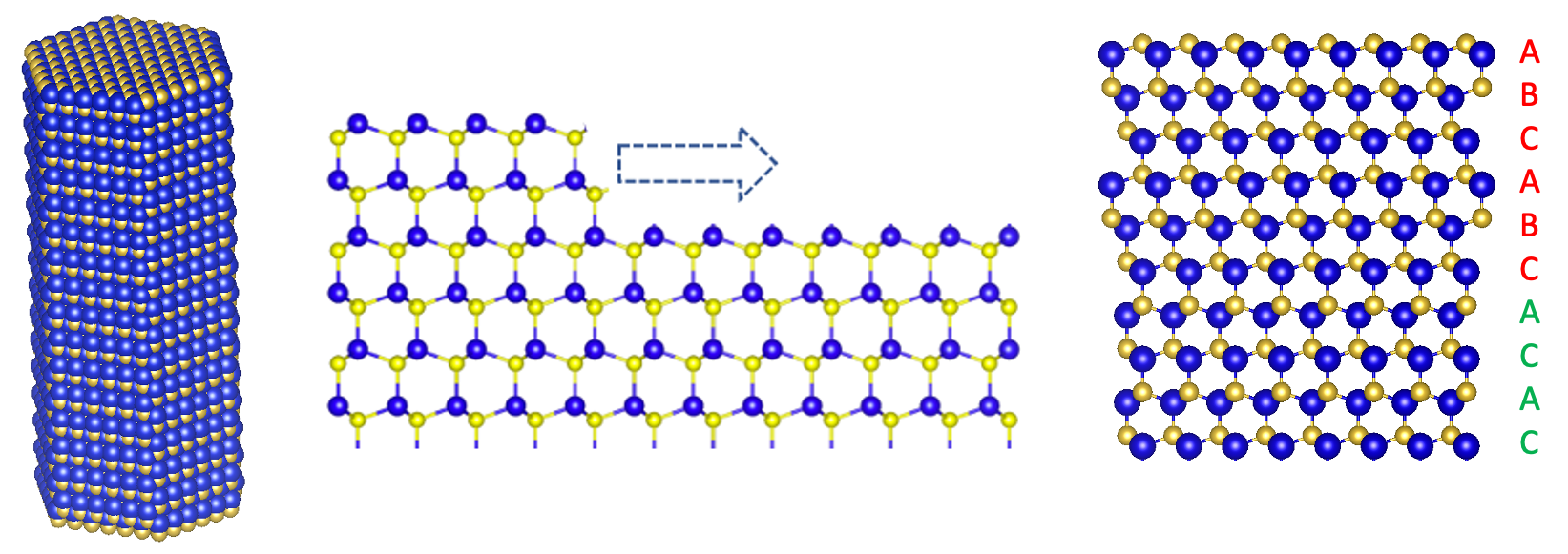A Unified Model for Epitaxy of Metastable Crystal Polytypes at the Nanoscale
Self-catalyzed (or "self-assisted") epitaxy has been widely used for the growth of III-V semiconductor nanowires (NWs), where liquid metal droplets are continuously supplied and consumed during the NW nucleation and/or transformation processes. Phase selections and switching of zincblende (ZB) and wurtzite (WZ) structures in these III-V NWs are critical for their electronic and photonic properties. Based on experimental observations, there are already some theoretical models based on experimentally measured variables, such as the droplet contact angle, to explain the phase selection/switching for self-catalyzed GaAs NWs. GaAs crystals prefer to ZB thermodynamically in bulk structures but can transform into WZ during self-catalyzed NW growth due to contributions of interfacial energies. Different than GaAs, GaN crystals prefer to WZ thermodynamically in bulk structures, but ZB NWs and ZB-WZ mixed NWs can be achieved during self-catalyzed epitaxy. In this project (U.S. Department of Energy, Office of Science, Basic Energy Sciences under Award # DE-SC0023222), we are applying first-principle calculations and atomistic simulations (molecular dynamics and kinetic Monte Carlo) to understand the thermodynamic and kinetic mechanisms of phase selection in self-catalyzed GaN nanowires. The ultimate objective is to develop a unified model for the epitaxy of metastable crystal polytypes at the nanoscale, where either ZB or WZ can be thermodynamically stable. This project is conducted in collaboration with Prof. Rachel Goldman at University of Michigan and Prof. Judith Yang at University of Pittsburgh.

Atomistic Simulations of Grain Boundary Properties in Magnesium Alloys
Qi’s group is involved in the PRedictive Integrated Structural Materials Science Center (PRISMS), a DOE-BES funded research center dedicated to integrated computational and experimental studies of structural alloys located at University of Michigan. One major task of our group is to apply atomistic simulations to understand grain boundaries (GBs) properties in Magnesium (Mg) and Mg alloys. We are developing an efficient genetic algorithm for predicting the minimum energy structures of GBs by considering both macroscopic and microscopic degrees of freedom for pure metals and alloys. Based on these GB structures, atomistic simulations and machine learning methods are applied to predict GB solute segregations, GB migrations, GB-dislocation interactions, and the corresponding mechanical behavior variations (Hall-Petch Relation, etc.).


